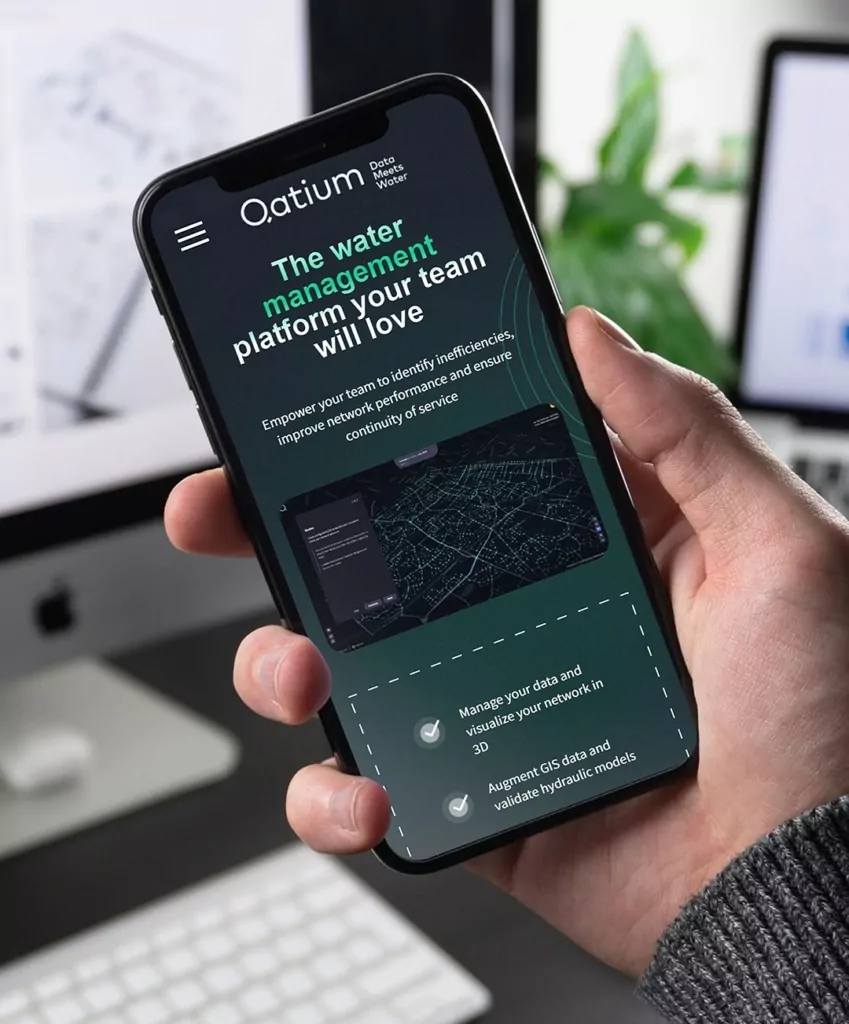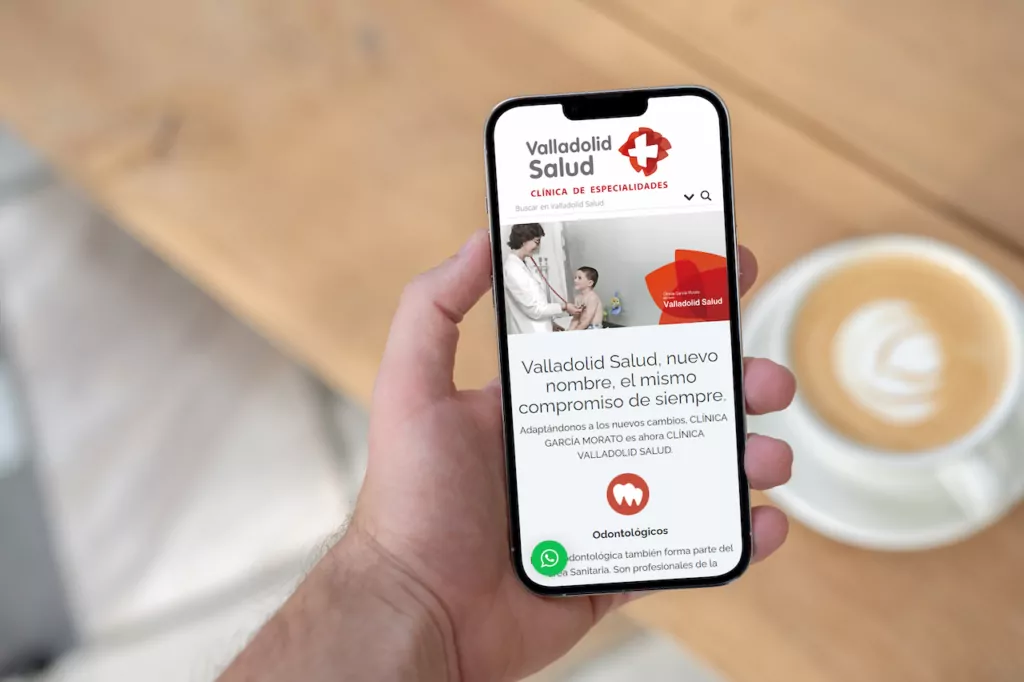Tabla de contenido
[zoomsounds id=”why-mobile-first-design-is-a-must-for-business-websites”]
To create an effective e-commerce website, it’s crucial to focus on convenience as well as design trends. The easier it is for users to access your services, the more successful your website will be. This means that your website should be easy to navigate on any device, and having a mobile-first design is essential.
When optimizing your website for mobile, tablet, or computer users, it’s important to ensure that no design works better for one medium than another. With online stores and services increasingly relying on mobile users, it’s vital to create a seamless user experience across all devices. How can you achieve this?
Introduction to Mobile-First Design
Mobile-first web design refers to when a website or any other online service is designed for peak functionality on mobile devices, followed by Desktop.
Mobile-first design is a design approach that prioritizes the mobile user experience before desktop. In the past, websites were designed using the desktop-first approach, which made sense since personal computers were the primary devices used to access the internet.
Today, however, mobile devices are increasingly used to access websites and online services. Unfortunately, many websites still prioritize desktop users over mobile users. This can lead to issues such as content incompatibility with mobile operating systems, difficulty displaying content on smaller screens, and overcrowded pages.
To address these issues, websites and online businesses must strive for mobile-optimized design. Responsive design is a key component of mobile-first design. A responsive website adapts its layout to suit the device it’s being used on. Mobile-first design is a form of responsive design that ensures the best possible mobile user experience.
However, responsive design is not a guarantee of a good mobile user experience. Many websites fail to design their sites for smaller screens first, resulting in an inferior mobile layout. Even responsive designs can make for a worse web experience for phone users than non-responsive desktop-first designs. Therefore, it’s essential to prioritize mobile users when designing a website or online service.

Why Websites Should Prioritize Phone Users
To provide the best user experience, websites should prioritize mobile users over desktop users. This means adopting a mobile-first approach to website design rather than focusing solely on responsive capabilities. Bottom-up design, like desktop-first design, takes content for big screens and makes small alterations so that it fits on a smaller screen.
However, this approach doesn’t address larger issues and only focuses on easy fixes that benefit developers, not customers. A more productive mode of action is through top-down design, where the big picture is looked at and divided into manageable portions leading to easy solutions. This makes things more convenient for customers.
Optimizing a website for a smaller screen first makes it much easier to make it compatible with larger devices. This is just one reason why mobile-first site design needs to be adopted everywhere. By designing websites with mobile users in mind, businesses can ensure that their website is optimized for the majority of internet users who prefer mobile devices over desktops.
Desktop is Getting Old
While computers were once the primary gateway to the internet, recent reports indicate that more than 70% of active internet users around the world now prefer mobile devices over laptops and computers. This trend means that online businesses need to prepare for a market where phone users make up the majority of the target audience.
However, this doesn’t mean that desktops are a thing of the past. It just means that businesses must ensure that their website is equally viable on both mobile and desktop devices. Failing to do so could impact their chances of survival in today’s market. The mobile-first model is the way to achieve this balance and provide an optimal user experience for both mobile and desktop users.
Not Everything Needs a Laptop
The popularity of mobile devices is not only backed up by statistics but also by logic. Mobile devices are more portable and user-friendly, and they do not require a keyboard and mouse. This convenience has led to phones becoming the method of choice for internet use, especially for quick everyday activities like checking the time, weather, social media, news updates, and calendars. Mobile phones offer much quicker and more accessible service, and you don’t have to wait several minutes for an iPhone to load.
From a business point of view, mobile devices are crucial for many activities such as streaming videos and music, reserving tables at restaurants, ordering food, online shopping, and booking flights, concert tickets, seats, or hotel rooms. This is why many of these services implement mobile-first design for their websites. It’s essential to recognize that desktop-first design is not only inconvenient for users, but it’s also a competitive faux pas on the business end of things.
Therefore, adopting mobile-first design is necessary for businesses that want to provide an optimal user experience for their customers and stay competitive in the market.
The SEO Perspective
The shift towards mobile devices has not gone unnoticed by search engines, particularly Google, which started a website indexing initiative for mobile servers in mid-2018. With more network users on phones than on desktops, mobile-based online services enjoy more overall exposure, and they are now prioritized by search engine crawlers. This means that websites that prioritize mobile-first design will enjoy higher rankings, leading to more traffic, responses, and revenue for their web services and online stores.
Therefore, investing in mobile-first design for e-commerce sites is a no-brainer. Not only does it provide an optimal user experience for customers, but it also ensures that businesses are visible and competitive in the search engine results, ultimately leading to more success and revenue.

How to Optimize Websites for Mobile Users?
Optimizing your website for mobile users is crucial in today’s digital landscape. Content management systems like WordPress offer the necessary tools to create mobile-friendly web pages.
However, mobile websites come with their own challenges, such as limited space for data, limited bandwidth, and less powerful software. When adapting content for mobile devices, it’s essential to keep these challenges in mind.
Here are some key practices and methods to optimize your website for mobile users:
1. Choose the Right Theme
Mobile-friendly website development requires a design that maintains its integrity regardless of screen size. When selecting a theme for your online business, choose one that works well on all screens or has top-down responsive features. If your current theme is not mobile-friendly, consider updating or modifying it. WordPress offers a wide range of options that work for different devices.
2. Optimize Content
As the screen size shrinks, so does the room for content. Instead of retrofitting text, files, and graphics, take a different approach.
Reduce Unnecessary Content
Mobile users have shorter attention spans, so it’s essential to keep content concise and engaging. Avoid adding excessive text or pop-ups that take up too much space and time. Limit your phone content to the essentials and use simple yet effective graphics. Avoid GIFs and other files that take too long to load with slower bandwidth. In mobile design, less is more.
Prioritize Necessary Content
After getting rid of unnecessary content, prioritize the essential elements. For e-commerce sites, this may include a call to action, graphics, or branding elements. Make sure these elements are prominent on the screen. Alternatively, create lists or drop-down menus to fit more content in less space, making it easy to navigate.
By implementing these practices, you can ensure that your website is optimized for mobile users, leading to more traffic, engagement, and revenue.

Professional Business Presentation
Do you need a redesign or a new website for your business?
Complete solution for small, medium or corporate business presentation. Great UX/UI designers, experienced programmers and high emphasis on testing. If you are looking for a professional partner for your business in the online world, contact us!
3. Internet Speed
Smaller devices are more convenient, but they are not as efficient as laptops and tablets when it comes to processing large amounts of data. This is a problem because studies show that even if a website is slow to load by a few seconds, it will lose traffic. For e-commerce and business sites, this is not an option.
With mobile sites, slow speeds are often associated with high bounce rates, which is the number of visitors who leave a page without engaging. To manage this issue, you can compress image files, optimize scripts, and use speed-enhancing plugins that are compatible with WordPress.
4. Improve Search Rankings
Google has announced its intention to crawl and index mobile-friendly sites, and other search engines are likely to follow suit. To optimize your site for mobile, you need to make sure that it can be detected by Googlebot. You can do this by:
- Keeping track of mobile-friendly keywords
- Ensuring that your mobile and desktop metadata are consistent
- Placing ads strategically
- Improving content structure (as discussed earlier)
In addition, Google must be able to view your site. To ensure this, check your robots tags for consistency and disable URL-blocking to allow crawling.
5. Use Plugins
Using plugins that add mobile-friendly features to web pages is an excellent solution for mobile users. Implementation may take time, but the results could be interesting. Keep in mind that not all plugins are free, and it’s recommended to use them as a last resort.
If you’re interested in using plugins, WordPress offers several options worth exploring. If you’re having trouble deciding, Google has recommended the WPTouch plugin as a favorite. It provides all the features discussed above in one simple solution.
WPTouch is available in both free and paid versions, with the latter offering vibrant themes and other useful features and add-ons in affordable packages for businesses.
6. Test Your Mobile Site
After optimizing your site for mobile users, double-check that it works before making it public. If your content is irregular, your site won’t load, or there are other technical difficulties, it’s better to fix them before the site launch.
You can look for testing tools and demo sites to check your WordPress site’s mobile functionality and assess where changes are needed. Alternatively, you can use Google’s mobile-friendly test or test the site on your own before making it public.

Outsourcing – The Gift that Keeps on Giving
Ensuring your website is mobile-ready is crucial, but as we’ve seen, there are many factors to consider. Business owners may not have the time, resources, or technical know-how to undertake such an endeavor while managing a store or service.
Thanks to our team, WeLoveWeb offer various e-commerce and web design solutions to small and medium-sized enterprises, including mobile-friendly design. With our assistance, it only takes an affordable fee to get your online business ready for a mobile-first era. Just contact us via form bellow and we will do the rest.
Mobile-First is The Future
In recent years, web consumption has entered a new era where phone users now outnumber PC consumers by a considerable margin.
As such, improving the web experience for phone users is now a top priority for major industries like streaming, e-commerce, and appointment-based services, to name a few. Fortunately, as Google now caters to mobile-first SEO, WordPress users have plenty of time and resources to adapt to these changes.







